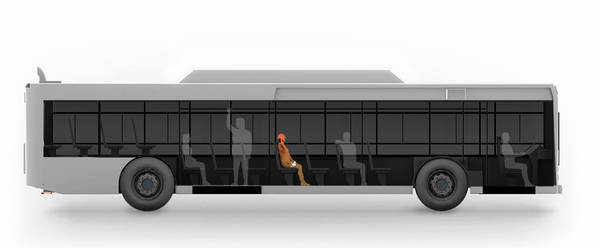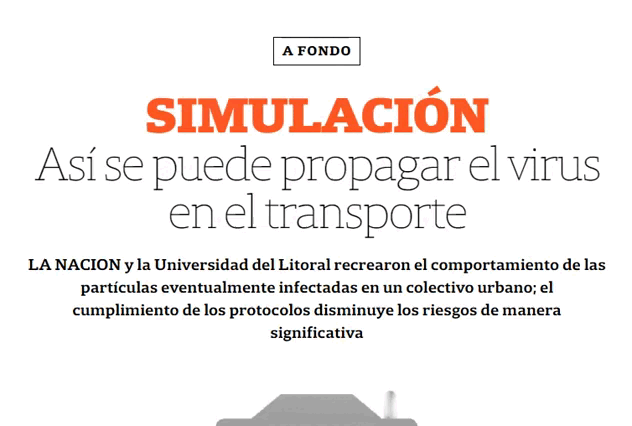
>>> Click to access The Simulator
One of the many debates caused by the coronavirus pandemic during 2020 was the way in which it was transmitted. Initially, the WHO pointed out that the virus was only transmitted through surfaces and through droplets expelled when sneezing or coughing. However, a group of scientists expressed their contrary position from the beginning of the pandemic and urged the international organization to include transmission by aerosols, small particles that are emitted especially when speaking or breathing and that can remain for hours in an environment depending on the conditions, as one of the ways of contagion. Although it was large consensus from the scientific community, the WHO only recognized aerosols as a way of transmission in May 2021, one month after the publication of the article.
In December 2020, LA NACION contacted Damián Ramajo and Santiago Corzo, two specialists of the Research Center for Computational Methods from the Conicet and the Universidad Nacional del Litoral. These researchers had previously published a study where they analyzed the behavior of respiratory particles within an urban public transport through computational simulation.

Based on the model developed by the researchers, further simulations were performed to understand the influence of different variables on particle dispersion within an enclosed environment. A scenario was generated that analyzed both the effect of air conditioning and open windows on the propagation of both large droplets and aerosols. In addition, it was studied how effective the face mask was in containing particles released by people during various respiratory activities.
LA NACION made a journalist article based on these scenarios, where it is combined the use of multimedia elements with a written text based on scientific evidence available at the moment of publication. Its value proposition lies in the above-mentioned simulations exclusively created for the article, which, combined with explanatory infographics, develop a nimble and dynamic story about aerosols, easy to understand for all readers.
STRATEGY & IMPACT
The main strategy was to show in a didactic and visible way what happens when a person breathes, talks, or sneezes, which is not usually observed due to the size of the particles emitted. Thus, the purpose was to conclude that we all generate respiratory particles that, if they contain the virus, may infect others, especially if the disease is asymptomatically manifested. Based on this observation, it was sought to appeal to the individual responsibility of users by showing different ways of reducing the risk of transmitting the virus within the closed environment.
At the time of publication, Argentina was in a stage of loosening restrictions in all social spheres. Schools had reopened after almost a year of completely virtual classes. The range of permitted economic activities was broadened and, even with reduced capacity, social and cultural activities were allowed. This inevitably meant an increase in mobility and images of crowded buses and trains soon began to appear. The curve of coronavirus cases slightly increased and the focus of the debate centered on the places where contagion was typically generated. This article was published in this context and provided tools to reduce the risk of both infection and transmission within an enclosed environment, as the conclusions could be applied to any indoor environment.
Although the news story may be read in its entirety in the digital edition, the article also had its printed newspaper version: it was the cover story of the first issue of El berlinés, a Sunday supplement that focuses on providing in-depth journalistic articles. The development was well received by the readers of LA NACION, which was the first Argentine newspaper to visually represent the behavior of aerosols in the environment. The article was replicated in radio stations, television shows and print media throughout the country, which contacted the researchers to provide more information on the simulations performed.
Two days after the publication, the Minister of Transport of the Nation announced that actions would be taken to fix the windows on public transport units in the Buenos Aires Metropolitan Area (AMBA) to check that they remain open to ensure permanent ventilation.